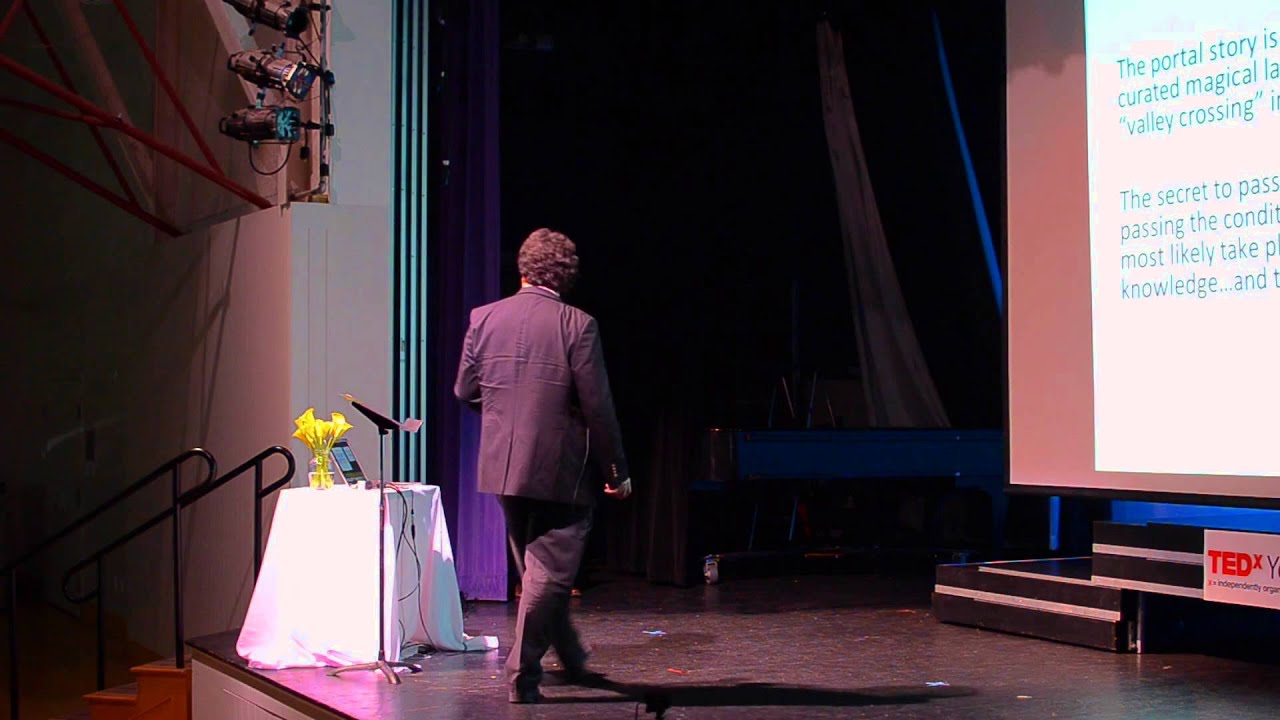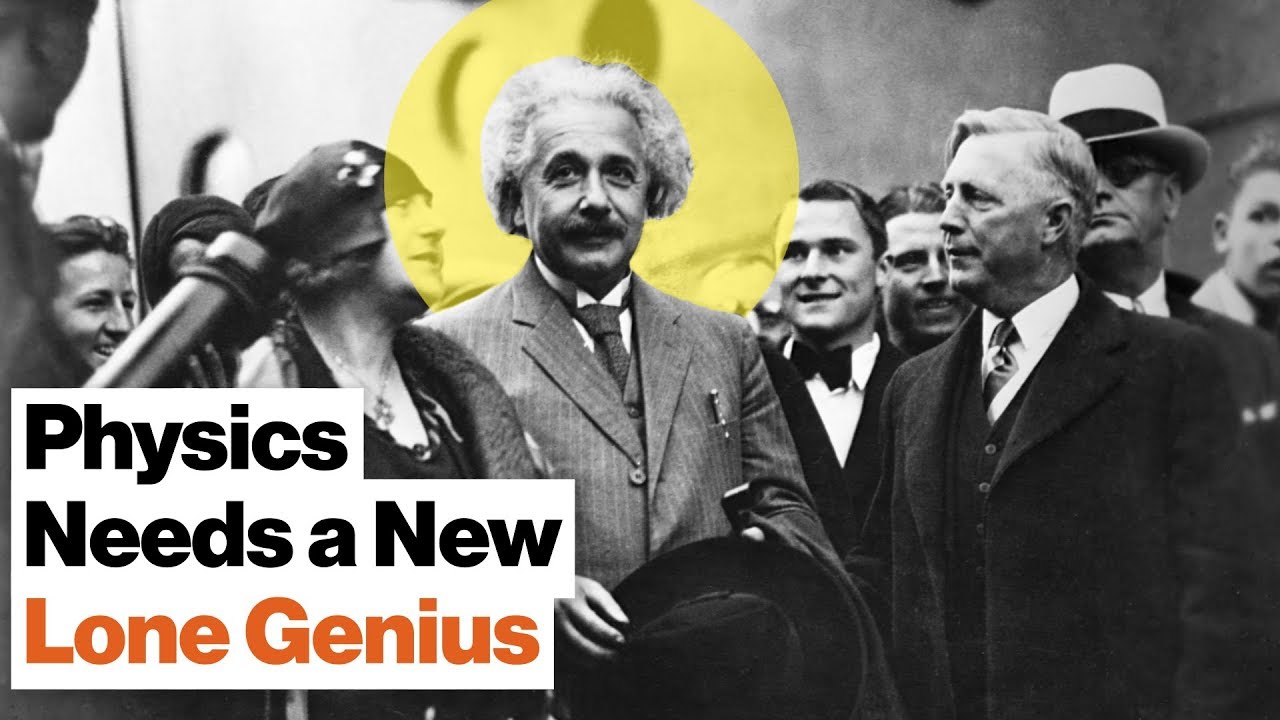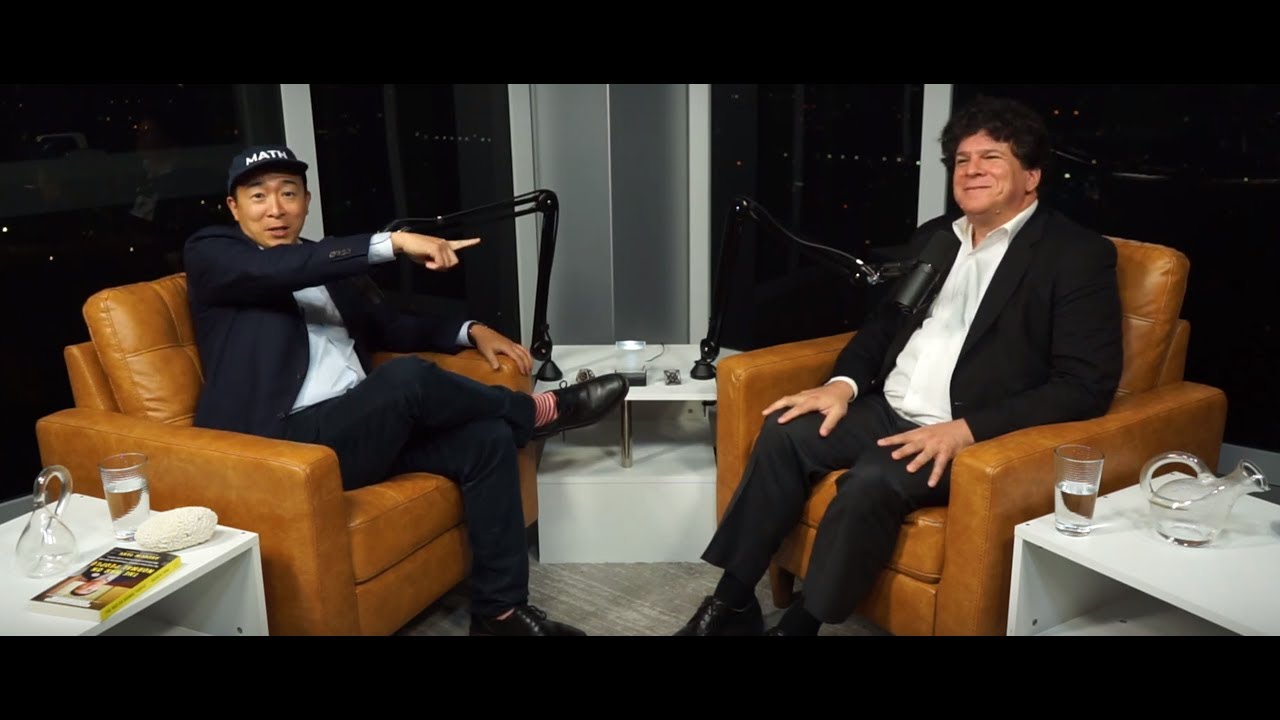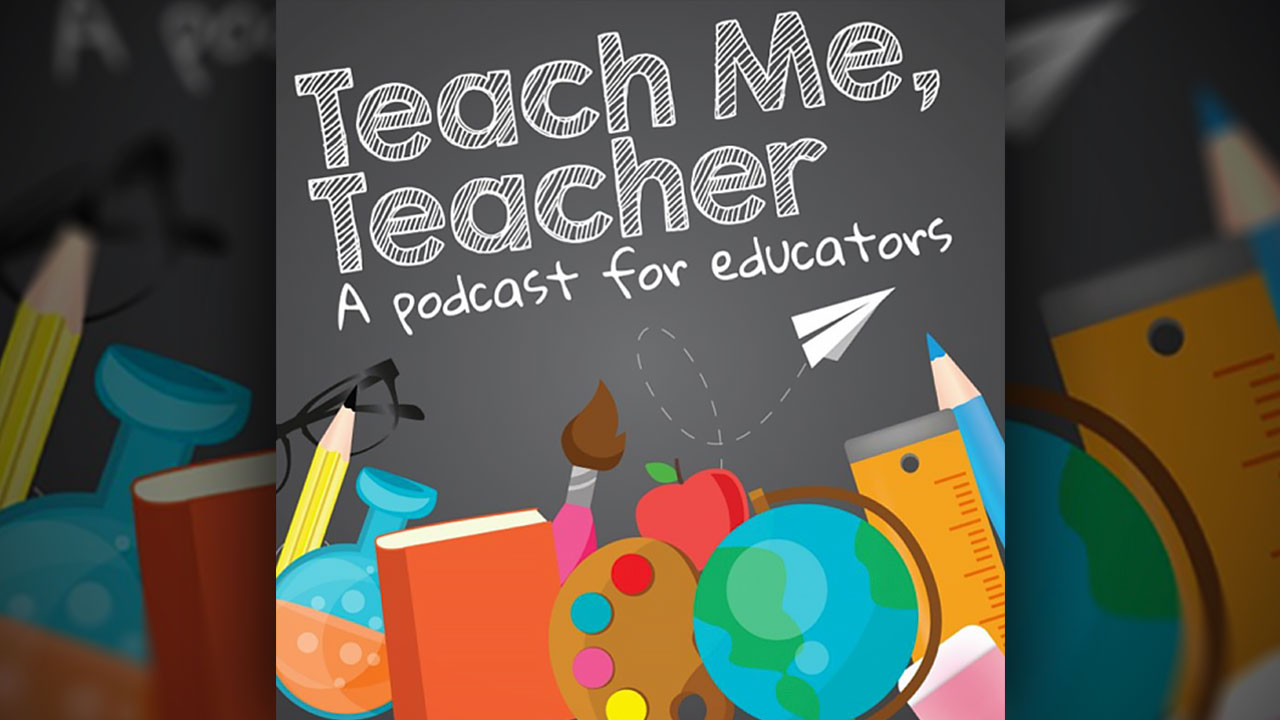
This talk explores a radical new approach to childhood education based on Umweldt hacking. We explore the possibility of building a portal from the world of a child to the frontier of research using carefully curated objects and tools which radically compress the requirements needed to understand the modern world. This so-called WonderCabinet™ based system, currently being pioneered in the Speyer Legacy school in Manhattan is discussed as a possible model for education that puts a comparable emphasis on developing both innovation and expertise.
Transcript
00:00:05
Eric Weinstein: What I’d like to talk to you about is a topic that I feel very uncomfortable with, because many of you are underage and it contains a bad word… but we have to get rid of our inhibitions. The question is, can we educate for genius? Genius is an extremely uncomfortable word in our world today, because many of us don’t believe in it, it appears to create inequality, and in general, when we try to think about genius, it doesn’t have a systematic explanation, so there’s a real question [as to] whether it even exists at all.
00:00:40
But what I’d like to do is to take a contrarian perspective and ask whether or not we could rejigger our education to believe in the concept, and see whether or not—not only if we have an opportunity to educate for genius, but whether, in fact, it is becoming a necessity with the rise of automation and the power of computing. So, well what I want to do is I want to talk about what I call Portal-based education. And I’ll talk a little bit more about what I see that as being.
00:01:10
In the words of Buckminster Fuller, “Everyone is born a genius, but the process of living de-geniuses us.” So in this vision of genius, it is not that there are special people and non-special people: everyone has something in them. It’s capable of making wild leaps, many of which are insightful, and if you’ve ever been around young children, you know that this power is often extremely strong early in life. The question is, why is it so difficult to carry forward?
00:01:38
Let us ask the question, what would the world look like if genius wasn’t stigmatized relative to expertise? You can say, “My expertise lies in machine learning,” [or], “My expertise lies in culinary excellence.” You cannot say, “My genius lies in marketing.” Right? Because these sorts of things immediately connote the idea that you’re self-promoting.
00:02:06
So we have Wile E. Coyote’s business card, the Genius Bar as seen at Apple from the perspective of South Park… as soon as people start talking about genius, it’s a red flag that something has gone wrong. In Silicon Valley, people are slightly more adventurous. So recently, I was asked to speak at Tim Draper’s University of Heroes, which is pretty close to the University of Geniuses. So I went down there, and I conducted an exercise. I asked everybody in the class to close their eyes, and then to stand up if they felt they were in fact heroes. I don’t know if there were 50 people in the audience, no one stood up. I thought that was a bad sign for the University of the Heroes, so I repeated the question with genius. One person stood up, and kind of shrugged his shoulders. Then I asked the question a third time, “Close your eyes and stand up if you’re a rebel,” and almost everybody stood up. Right? So in fact, rebellion is something we can—we can call our ourselves rebels, but we can’t call ourselves heroes or geniuses very easily.
00:03:13
And so that’s a very interesting question. If genius is actually something prosaic, and analytic, and definable, it means that we are frightened of even considering this cognitive city. There are fine private schools in New York, but it is a bit of a puzzle that some of the finest schools in the country do not produce Nobel laureates at anything like a clip that would rival, let’s say the Bronx Sciences and Stuyvesant high schools, which have produced many Nobel laureates. So the question is, do we have a vibrant educational system in our independent schools, or is it mostly trained on privilege preservation? Are we taking enough risk, and are we getting the kind of extraordinary performances that we need as a country to grow and to innovate?
00:04:03
So I want to ask the question, why is there one story, that in childhood is repeated over and over and over again, with no obvious pay? It’s the story of the Portal. The child is in an ordinary world, probably struggling, and at some point encounters some magical doorway to an alternate reality which is far more fantastic, much more interesting, and is usually the beginning of an unsupervised journey as the child tries to contend with fantastic forces.
00:04:38
So here we see Alice looking down the rabbit hole, the famous wardrobe of The Lion, Witch, and the Wardrobe in the Narnia series, and my personal favorite, The Phantom Tollbooth, where Milo finds a journey into the world of both arts and letters as well as the sciences, as he contends with very advanced concepts. Can we create entire academies, or can our academies become the Portals themselves is what I’m interested in. And what does this story mean? Why would it be so highly conserved if it didn’t have an extraordinary function?
00:05:15
The second question I want to ask is a bit of one of these sort of self-paradoxical questions. If we teach self-teachers, does our teaching crowd out their self-teaching? At some point I went to a movie, and I was incredibly emotionally affected, and no one else in theater felt the same way. That movie was Kung Fu Panda.
00:05:37
[Audience laughter]
00:05:38
Now you laugh, but I was so moved by Kung Fu Panda I’ve probably seen the film 10 times. It’s the only film that has ever treated the subject nearest and dearest to my heart with sensitivity and with grace. And when I wrote a description of how I saw the movie on Quora, it sat there with very few votes for a long time—until suddenly, something happened that I woke up one morning and there were 106 new votes, and then 214. And now it has over 1000 votes. It’s the most viral thing I’ve probably ever written.
00:06:12
And it’s because it’s the story of one self-teacher who figures out how to pass this to another. Einstein left no school, and thus his genius died with him. Dirac left no school. Nobody has been able to become Jim Watson. What if these great people are able to teach us how they self-taught? We would solve an incredible problem, and Lord knows what would give away to that kind of transmission of knowledge.
00:06:43
So in the film, it’s very interesting that the two characters who engage in this transfer—most directly—only meet twice. Once, when the Panda breaks into a Kung Fu competition, showing an act of improvisation. And the Turtle appears to choose the Panda, who is clearly inappropriate, simply based on the fact that they did something original, unlike all of the highly trained competitors. The second time, the Panda is mostly grousing that he’s failing relative to the highly trained competitors, but the Turtle shows no actual interest in this problem whatsoever.
00:07:28
Now, what I want to talk to you about is really, probably, the sum total of what I know about success. What I know about success is that normal people never want to go downhill. They don’t want the ridicule. They don’t want the indefensible position. They don’t want the humiliation, they don’t like the decrease in status, and they don’t like hearing that they’re not doing good science or good work. This is in some sense indefensible.
00:07:59
This is the point where you max out your credit cards. This is the point where your loved one starts thinking about leaving you, all sorts of bad things happen. But the one thing that you don’t really understand is that great success is protected by the unwillingness of almost any sane person to want to go downhill and the balls to go uphill. And this is called crossing the adaptive valley. And there are people who have crossed an adaptive valley, and there are people who have never crossed an adaptive valley, and they have a very difficult time having a conversation between them.
00:08:35
So what I’d like to conjecture is that the Portal story is actually about unsupervised learning most of the time, not in the machine learning sense, but in the fact that mostly the child is alone in a dangerous and crazy landscape, learning and encountering things that they were not meant to encounter. And at a time when we were not so closely parented, it was much more common that children would have these sort of unsupervised adventures.
00:09:00
The secret to passing self-teaching is passing the conditions for self-teaching and then getting out of the way and getting out of the loop. What I’ve heard outside here is some of the most extraordinary conversation, the kids—the inmates—are clearly running the asylum here, and to good effect. So both point to Portal-based education, which is a curated landscape without curated experience. [inaudible].
00:09:27
So to compete for mindshare, what I want to do is I want to think about carefully curating a hundred items of central importance to all the most technical and difficult fields, and then making sure that they are all pushed into the world of a child. So that the most difficult concepts are not simply found in some abstract symbols or paper, but are in fact rendered concrete, and therefore meaningful to everyone even down to the level of a kindergartener.
00:09:58
So here are some of the items. In my opinion, they are some of the most spectacular elements of human experience. To me, these are the Hamlets, these are the Beethoven symphonies, these are things that for some reason we don’t share as part of a canon that maybe we have previously shared other kinds of culture.
00:10:20
And what I’d like to do today is to show how powerful this can be by showing you that you can all see into the fourth dimension. Let’s see [inaudible].
00:10:30
Can we teach children to see four dimensions? You’re seeing the third dimension from flatland. Imagine that this is a sketch in two dimensions of something which is meant to be rendered three-dimensional. There’s no trouble understanding that the three-dimensi—that the two-dimensional sketch is meant to indicate a three-dimensional plan for a sculpture. But can we do the same trick to use three-dimensional sketches to see four dimensions?
00:11:00
Imagine that I first show you a two-dimensional sketch of something called a Klein bottle. In fact, I could render it in three dimensions in glass. And by filling it with a colored liquid, we can see that there’s a possibility of using color, rather than time, as if it were a fourth dimension. But the problem is that the color changes abruptly between clear and colored, and so we can’t easily create a world in which we can see that the neck of this bottle does not pass through its base. But what if we were to smooth that out? So we have the standard three dimensions of height, width, [and] depth. But in fact, we use color as a fourth spatial dimension.
00:11:51
Now, we have a bottle with no inside and no outside, in which the yellow nature of the bottle passes through a blue base, and so if you have a color spectrum that goes between, let’s say negative numbers represented in yellow, and positive numbers represented in blue, you can see that this neck is not actually passing through the side of this bottle because in four-dimensional space, they are different colors at the point of intersection.
00:12:21
My claim is you are now actually seeing in four dimensions. This is a property that I’m confident enough that everyone in the audience, if they follow even loosely, has the beginnings of an inkling that they potentially have powers they never have considered possible. So when a child sees in four dimensions, how do we know that they’re really getting it? You put a Klein bottle in every classroom and you start to do this, do they actually see something? So imagine that an 11-year-old child asks if a Klein bottle is actually two Mobius bands sewn together. It’s an astute comment. You say yes. Within hours, you find that the child has actually sewed together a Klein bottle as an unsupervised product.
00:13:10
The point is you’re jailbreaking college-level topology, and you’re putting it in the hands of young children and unleashing genius at will. Can we take it even younger? So in the Wonder Cabinet, I had a couple of items, one of which came from the general theory of relativity. Now very few of you probably can read this equation, even though it’s the Einstein field equations for general relativity, because it requires calculus and linear algebra at a high level. Think of this as the sheet music. You can’t really understand the symphony by reading the sheet music unless you’re a specialist, but we could perform the symphony instead.
00:13:51
And if you see this ring here, these are distant galaxies that have been put all along a ring by a distortion and a warping in space and time. You are seeing the warping of space and time through its effects on a single galaxy, or cluster… you find some amount of mass. This is called a gravitational lens.
00:14:20
On a different topic, we put up a picture of the map of dark matter, which is not easy to understand, we don’t have a model for it, and it can’t be easily seen. Further, we don’t have any equations, there’s no sheet music. We have the symphony, we have a recording of the symphony if you will, but we don’t actually have the plans or the sheet music for this symphony.
00:14:43
So as I have two of these things in the hallway, I headed into the bathroom at the Speyer Legacy school, but there’s not such great acoustic insulation between the hallway and the bathroom. And as soon as I disappeared from the scene, the kids start asking each other well what’s this and what’s that? The question becomes how do we have a map of dark matter? It’s dark, how do we know where it is with that kind of specificity? And I was astounded that very quickly, the third and fourth graders figured out that you use the gravitational lens—that’s one way of doing this—to figure out where the distortions in space and time are, and indirectly infer the position of the dark matter by its effect on visible light, which is a very advanced idea for people who don’t know the Einstein field equations.
00:15:33
In this case, we could also ask why do we need complex numbers? This is often how they’re presented… But in fact, if we follow a chain of “why” questions, what we actually get to is the concept of a gauge theory on a fiber bundle. But there’s almost no visual example that I can show you of a gauge theory on a fiber bundle.
00:15:55
This is a picture of what complex numbers do for you, where those giant circles are swept out by complex multiplication. This is the only picture I can show you of something that actually indicates what our knowledge of the physical world looks like at the deepest level, thank you.
00:16:15
So to conclude, as repetitive tasks become automated, they become set up to be replaced, which means that everything that we do in terms of expertise is most likely to be replaced by a computer. Our best hope, to maintain our advantage as human beings and to speak to our own humanity, is to begin to shift away from expertise as the dominant model of education and towards something that looks like creativity and genius, and I can’t think of a better audience to leave with that point. So thank you very much for your time, you’ve been a fantastic audience.








